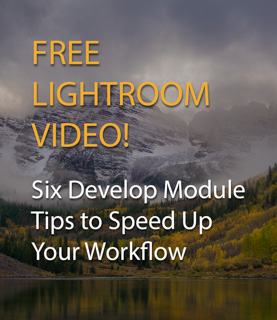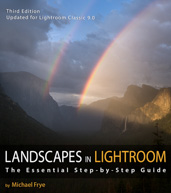by Michael Frye | Dec 19, 2025 | Announcements
A Landscape Photography Webinar

Moon rising above Half Dome from Tunnel View, Yosemite NP, California
Learn how to use simple, powerful tools to plan photos of the sun, moon, Milky Way, or any celestial object
We have powerful tools for photo planning at our fingertips – apps that allow us to predict where the sun or moon might rise or set in relation to the landscape, how the light will look at a given time and place, the position of the Milky Way above the land, and much more.
Unfortunately, many of these tools are excessively complicated, unintuitive, and difficult to learn. I know many photographers who have thrown up their hands and given up when faced with the dense complexity of these apps.
But it doesn’t have to be that way. In this new webinar I’ll show you how I use a few simple tools to precisely visualize the position of the sun, moon, Milky Way (or any celestial object) in relation to the landscape, and see how the light will change for any scene. We’ll delve into apps like PhotoPills, The Photographer’s Ephemeris, The Photographer’s Ephemeris 3D, and Planit Pro – but we’ll stick to the things you need to know, bypassing the extraneous stuff that only gets in the way.
(more…)
by Michael Frye | Dec 14, 2025 | Light and Weather
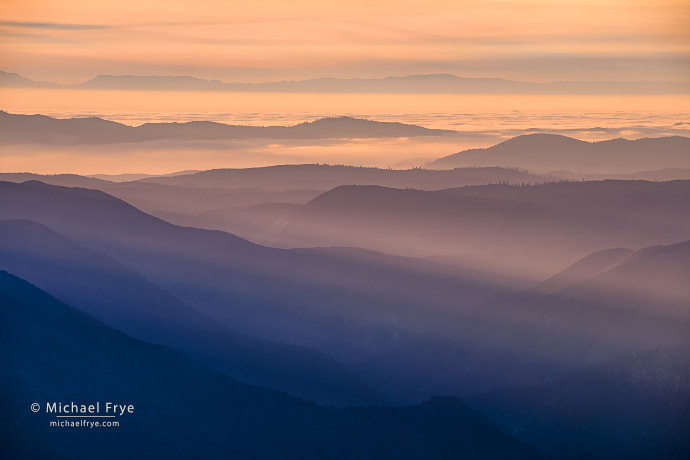
Mist, sunbeams, and a fog layer, Sierra Nevada foothills, California.
We’ve had a persistent temperature inversion in California’s Central Valley over the last three weeks. That’s a long time; in fact I can’t remember an inversion lasting this long before.
Normally temperatures get colder at higher altitudes. This is partially due to the sun warming the earth, which warms the air directly above it. Also, higher air is lower in pressure, which results in lower temperatures.
(more…)
by Michael Frye | Sep 1, 2025 | Light and Weather
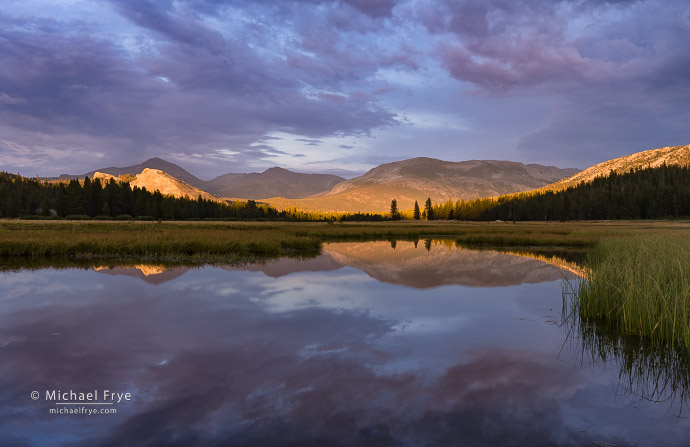
Sunset light, high country, Yosemite NP, California. I made this photo on Monday evening as the sun sank into a gap in the clouds and started to light the peaks.
Subtropical regions of the world experience monsoons every summer. The most famous monsoon occurs over the Indian subcontinent. But North America also gets a monsoon. It’s a complex weather process, but a primary force is the hot summer temperatures over land, which creates a localized low-pressure area, which in turn pulls moisture from the Gulf of California (and, to a lesser extent, the eastern Pacific and Gulf of Mexico) over the deserts of northern Mexico and the southwestern U.S. This monsoonal moisture brings thunderstorms to these regions, especially over higher terrain. While these thunderstorms are usually scattered widely, they can cause intense downpours over local areas, generating flash floods.
Here in central California we’re at the outer limits of the North American monsoon region. Monsoonal moisture typically reaches us for only a few brief stretches each summer, and often only generates showers and thunderstorms over higher elevations as that moisture gets pushed upward, cooling the air and causing the water vapor to condense into clouds and rain.
(more…)
by Michael Frye | Jul 20, 2025 | Light and Weather
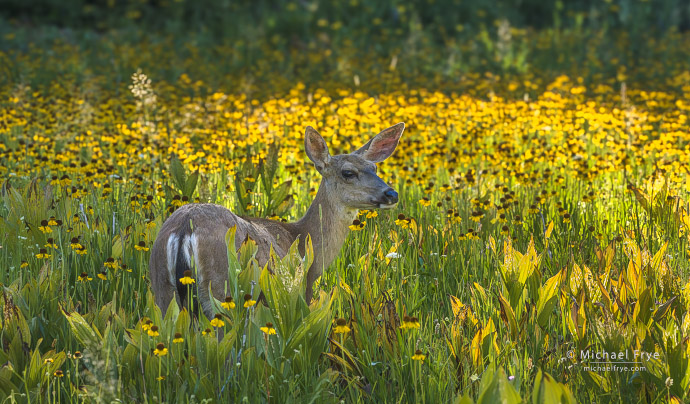
Mule deer doe and backlit wildflowers, Yosemite NP, California. 262mm, 1/500 sec. at f/16, ISO 1600.
It’s midsummer, which motivates Claudia and me to seek cooler and less-crowded spots in the Yosemite high country. And there are usually many flowers at those higher elevations this time of year, which gives us another incentive to go up there.
We spent a couple of afternoons recently in some colorful meadows. I loved the way the sunlight filtered through the trees next to these meadows, creating bands of light and dark through patches of flowers.
(more…)
by Michael Frye | Mar 18, 2025 | Travels and Stories, Wildlife Photography
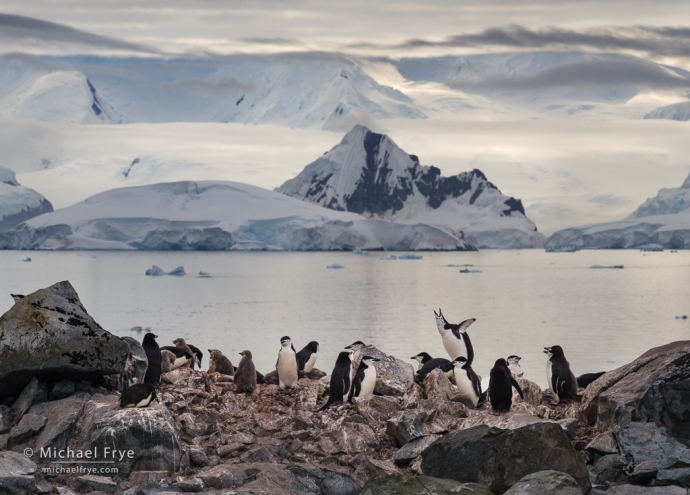
Mountains, glaciers, and chinstrap penguins, Antarctica
At the end of our trip to Antarctica for Visionary Wild, I told Claudia that the thing I was going to miss most was seeing penguins every day. It seemed strange to be heading back to a world without penguins, since they had been a daily part of our lives for two weeks.
And penguins are so much fun to watch. While supremely graceful in water, they’re awkward on land. Yet every day many penguins climb and descend from their nests on slopes so steep they would intimidate most humans. They fall all the time, but always seem to bounce back up and keep going. They’re determined and dedicated parents; they have to be to thrive and reproduce in this harsh environment. And they’re feisty. They won’t tolerate other penguins getting too close to their nest, or intruding on their space.
(more…)






